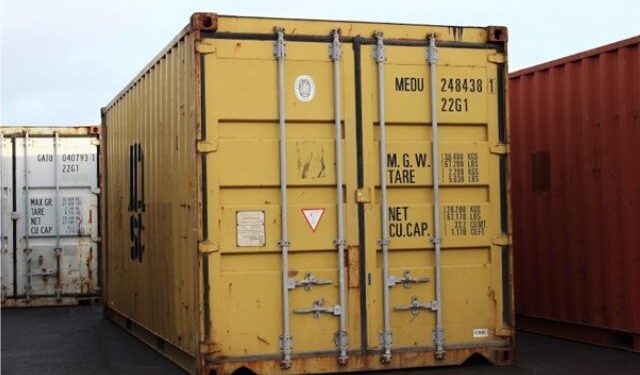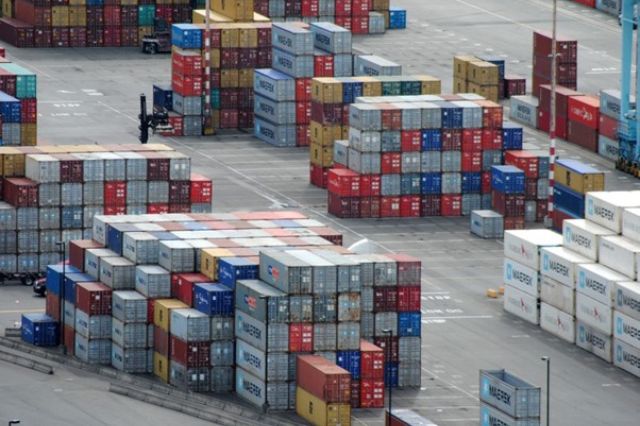Choosing the right size of container for storing your belongings is important to space utilization, protection of your commodities, and saving you unneeded costs. Whether you want to move, declutter, or need temporary storing solutions, this guide will outline how to choose the container size that best suits you.
Evaluate Your Requirements for Storage
Step one for choosing the appropriate container size involves evaluating what you plan to put away. This assessment will give a very clear view of the volume and type of items you want to fit into the available containers.
- Create an Inventory: Take an inventory of all the items you’ll put in your storage. Remember to list the large pieces of furniture, appliances, boxes, and miscellaneous stuff. This is a good start towards calculating your size.
- Measure Large Items: Record accurate measurements of your biggest items, especially furniture and appliances. This way, you’ll be assured they will fit properly in the selected container.
- Plan for the Future: Plan for future requirements; you might need extra things to be stored sometime later. In most cases, it’s advisable to pick a slightly larger container to cover expected growth in your storage needs.
Container Size Measurement
Storage containers come in a variety of standard sizes, each suited to different storage needs. Getting familiar with these options will help you make an informed decision.
Common Container Sizes:
- 8-foot containers: Good for small storage needs, equivalent to a walk-in closet
- 10-foot containers: Good for a studio apartment or small one-bedroom apartment
- 16-foot containers: Good for a standard two-bedroom house
- 20-foot containers: Good for a larger three or four-bedroom home
- 40-foot containers: Ideal for extensive space storage needs, equivalent to about two average-sized bedrooms in space
- 8×40 storage containers: Combination length and width, offering quite sufficient space for large-sized storage requirements, especially with 8×40 storage containers that provide ample room for a variety of goods and materials.
Calculate Required Space
Now that you’ve taken an inventory and made sense of container sizes, the next thing is to estimate the space needed.
Use Visualization Techniques: It helps understand that a standard 20-foot container can hold in it roughly the contents of a 2-3 bedroom house or around 300 medium-sized moving boxes.
Consider Stackability of Items: Check how stackable items are. Boxes and square shapes stack easily, and odd-shaped objects will take much more space in the floor.
Factor in Access Needs: If you will need to often access your stored items, use extra space for pathways and more accessible retrieval.
Consider Specific Factors
There are several aspects beyond simple dimensions that will affect your container size.
Height Requirements: Units are usually 8’6″ tall, whereas high cube units are an added foot of height. Use this if the items you are storing are tall or you’ll want to maximize your vertical inches.
Weight Limitations: Be sure of the maximum weight capacity in different container sizes. The risk of overloading damage to the container and also to your belongings is pretty common.
Climate Control: If your items need certain temperatures or humidity, factor these requirements into your size calculations. Climate control equipment may use up more space.
Also read: Building Your Dream Home Office: Why Portable Sheds are the Perfect Solutions
Final Tips for Choosing Container Size
To further narrow down your selection, consider these final practical tips:
- Flexibility: A container size that can offer flexibility in usage may include options like adjustable shelving or partitioning.
- Site Constraints: The chosen container size must be accommodated at the intended location. This may involve access for delivery and any space constraints.
- Seek Experts: If you are unsure, then don’t hesitate to seek advice from storage professionals. They will give you useful insights based on their experience.
- Go View a Facility: If possible, visit a storage facility to see the container sizes in person. This can help you visualize the space and make a more informed decision.
Efficient Packing Techniques
To make the most use of your chosen container size, you will want to implement these packing techniques in order to maximize your usage:
- Disassemble Furniture: Take apart large furniture items when possible to save space and protect them from damage during storage.
- Use Uniform Boxes: Pack items in similarly sized boxes for easier stacking and more efficient use of space.
- Fill Empty Spaces: Utilize all available space by filling gaps with smaller items or packing materials.
- Create an Organization System: Plan the layout of your container to maximize space efficiency and accessibility.
Budget Considerations
While it’s tempting to choose the largest container available, it’s essential to balance your needs with your budget.
- Compare Costs: Evaluate the cost differences between container sizes. Sometimes, a slightly larger container may offer better value per square foot.
- Consider Long-Term Needs: If you anticipate needing storage for an extended period, investing in a larger container initially may be more cost-effective than upgrading later.
Making the Final Decision
Now you should be good at selecting the right size. Remember these:
- Take stock of your current and future storage needs.
- Know the container sizes and capacities.
- Calculate your space based on your inventory.
- Consider height and weight restrictions.
- Pack efficiently to maximize space.
- Balance your needs with your budget.
The right size container for selection in the storage process allows your belongings to be secure in the best way and with the least amount of them. You can now come to assess your needs since you can see all options provided and then choose a container that has the solution to your needs.
Better to be a little more than having too much in one. You can really, really choose the right size container for you.









